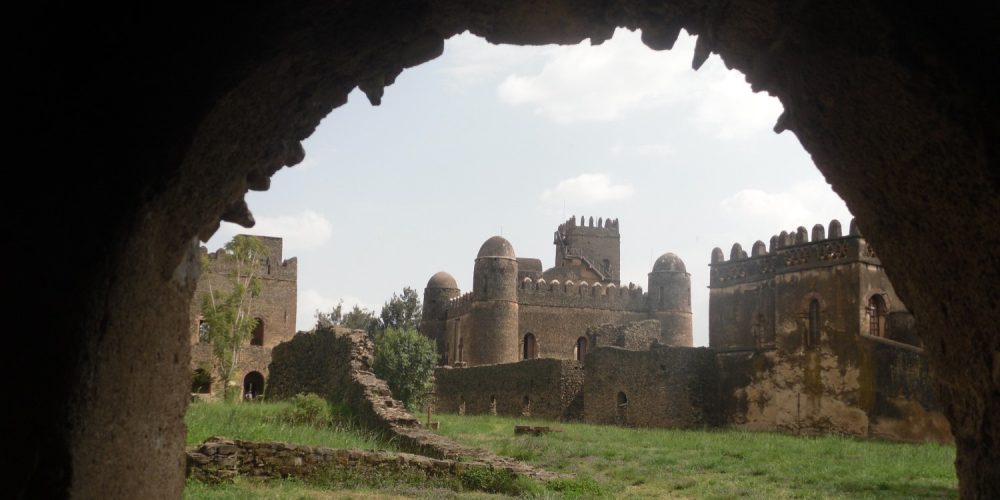
Ethiopia is a country with a rich and diverse history, dating back to ancient times. One of the most fascinating aspects of its heritage is the architecture of its fortresses and castles, which reflect the influences of various cultures and civilizations that have interacted with Ethiopia over the centuries.
One of the most impressive examples of Ethiopian fortifications is the Fasil Ghebbi, a complex of buildings located in Gondar, the former capital of the Ethiopian Empire. The Fasil Ghebbi was founded in the 17th century by Emperor Fasilides, who broke with the tradition of nomadic rulers and established a permanent seat of power. The Fasil Ghebbi includes his castle, which is considered one of the marvels of Ethiopian architecture, as well as palaces, halls, libraries, churches and stables built by his successors. The Fasil Ghebbi showcases a unique blend of Hindu, Arab and Baroque styles, reflecting the diverse influences that shaped Ethiopian culture.
Another notable example of Ethiopian castles is the Shum Agame Sebhat Subagadis Castle, located in Adigrat, in the Tigray Region. This castle was built in the 19th century by Dejazmach Subagadis Woldu, a local ruler who resisted the Egyptian invasion and later became one of the founders of modern Ethiopia. The castle is a testimony to his courage and vision, as well as his artistic taste. The castle features a rectangular shape, with four towers at each corner and a central courtyard. The walls are decorated with paintings and inscriptions that depict scenes from Ethiopian history and culture.
Ethiopia’s architecture also reflects its natural environment, which offers many opportunities for defense and protection. Ethiopia is a land of mountains and plateaus, which create natural fortresses that can be easily fortified by human intervention. Many Ethiopian castles are built on top of flat-topped mountains called ambas, which provide a strategic advantage over potential invaders. Some examples of ambas castles are Debre Damo, Yeha and Amba Aradam.
Ethiopia’s fortresses and castles are not only monuments of the past, but also living symbols of its identity and resilience. They are part of its cultural heritage, which deserves to be preserved and appreciated by locals and visitors alike. They offer a glimpse into the history and diversity of Ethiopia, as well as its beauty and creativity.
Some readers may be curious about the role of the Romans in Ethiopia’s history. The Romans referred to sub-Saharan Africa as Aethiopia, meaning “burned-face” in Greek. They had access to the memoirs of Hanno the Navigator, a Carthaginian explorer who sailed along the west coast of Africa in the 5th century BC. However, they did not have much direct contact with Ethiopia until later periods. The Romans conducted several expeditions across the Sahara to explore and trade with sub-Saharan regions, such as Lake Chad and Niger River. They also had some interactions with the Kingdom of Aksum, which emerged in Ethiopia around the first century AD. Aksum was a powerful and wealthy state that controlled trade routes linking the Roman Empire to India and Arabia. Aksum also adopted Christianity in the 4th century AD, becoming one of the first African kingdoms to do so. The Romans recognized Aksum as an ally and a trading partner, but they did not attempt to conquer or colonize it.
Leave a Reply